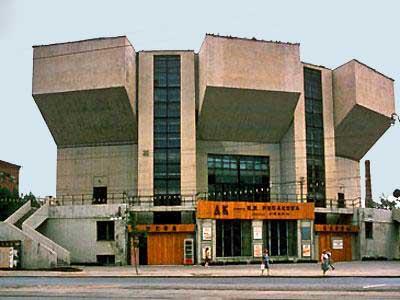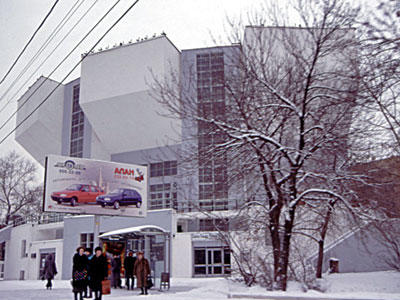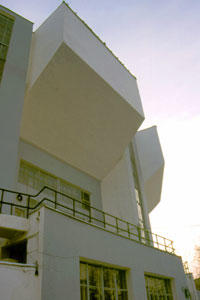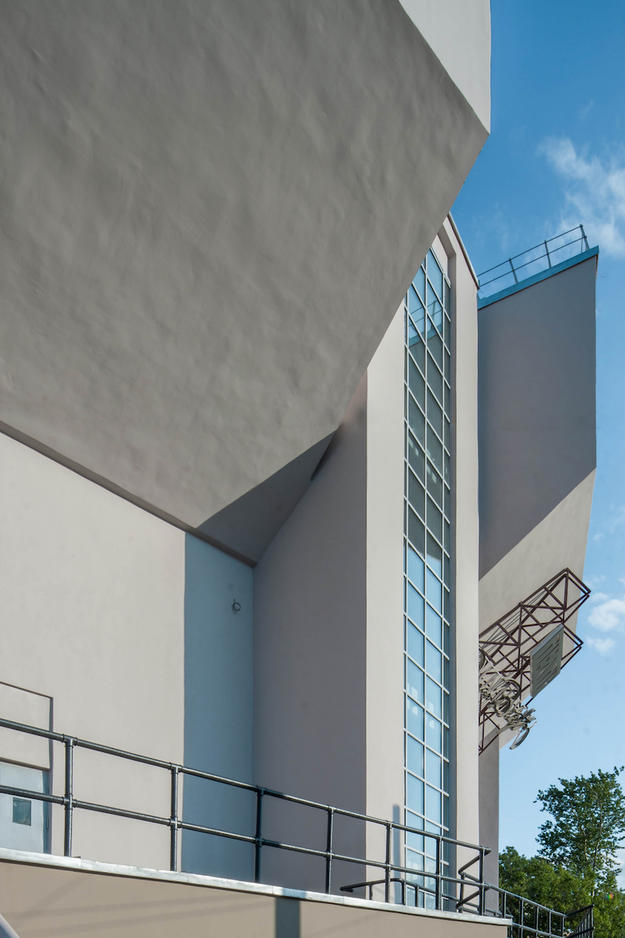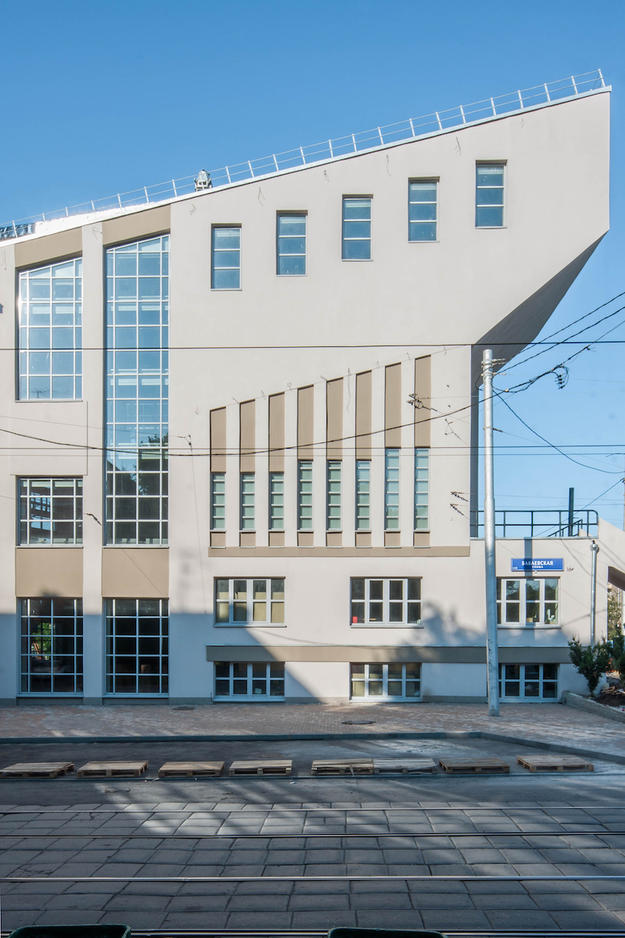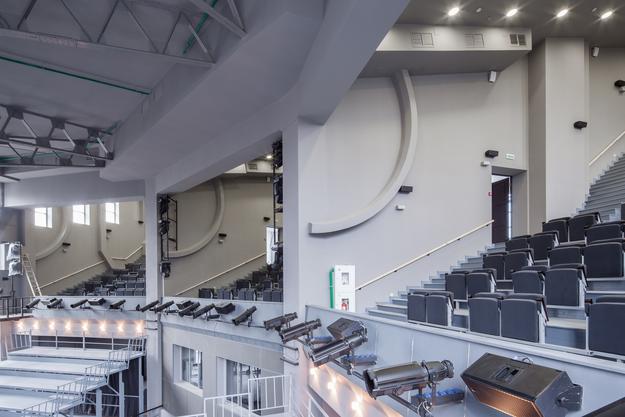Architect Konstantin Melnikov designed the Rusakov Club as a theater and social meeting place for factory workers. Built in 1927, the structure reflects the Constructivist style that developed in Russia from the 1920s through the early 1930s. The distinctive façade of the avant-garde building reflects Melnikov’s experimental interior design, in which three large galleries slope upward from the central stage area in the form of cantilevered seating sections. Mobile walls in each of these galleries allow for adaptability to different seating and staging arrangements.
The building, which underwent insensitive renovations in the late 1930s, suffered deferred maintenance through the majority of the twentieth century. The minimal work performed on the building included replacement of exterior finishes and the removal of the club’s stucco lettering. In 1996, the building was leased to a prominent Russian avant-garde theater director, Roman Viktyuk, for use as a performance arena and nightclub, but remained out of use due to the need for restoration. The structural integrity of the building’s large, irregularly shaped roof required assessment and some of the walls and foundations also needed inspection.
The avant-garde theater opens again
A landmark of twentieth-century design, the Rusakov Club was included on the World Monuments Watch in 1998 and 2000, and, with a grant from American Express, we supported the replacement of the roof in 1999. The Moscow Committee for Monuments Protection oversaw the project and provided additional funds that went towards window repair and replacement.
After significant delays and financial struggles, the city of Moscow, which owns the site, began a comprehensive project to restore the Rusakov Club in 2012 as a fully functioning theater and community center. Viktyuk and his theater company, who remained lease-holders but had performed in other venues during the work, debuted at the rehabilitated club in the fall of 2015. The city-run project, which utilized Melnikov’s original plans for the building, incorporated the restoration of certain historic features, including a set of approximately 100 wooden chairs, and the addition of historically-inspired features, such as the exterior stucco lettering. The project also included the addition of modern elements and technology. A 2016 report by the Secretary-General of DOCOMOMO Russia indicates that alterations to Melnikov’s original structure, namely, changes in layout, capacity, and design, were made during the project.
2016 Photos: Denis Esakov

